XMM-Newton News Archive 2007 - XMM-Newton
XMM-Newton News Archive - Year 2007
Back to News Archive.
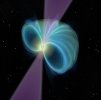
Pulsed heartbeat of a weird new type of star
XMM-Newton has detected periodic X-ray emission, or the pulsed heartbeat of a weird new type of star. Collecting the X-rays from the so-called rotating radio transient has confirmed the nature of the underlying celestial object and given astronomers a new insight into these exotic objects.
Further details on the ESA Space Science News Pages
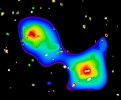
XMM-Newton unveils Hidden Cosmic Giant
Astronomers working with XMM-Newton have discovered a new cluster of galaxies, hidden behind a previously identified cluster of galaxies. The recently exposed cosmic giant is apparently just as bright as the first group, but is six times further away.
Further details on the ESA Space Science News Pages

An X-ray Santa Claus in Orion
ESA's XMM-Newton X-ray observatory has discovered a huge cloud of high-temperature gas resting in a spectacular nearby star-forming region. An early christmas present for astronomers, the cloud suggests that hot gas from many star-forming regions leaks into the interstellar medium.
Further details on the ESA Website
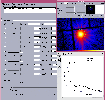
General Patch to SAS 7.1.0 released
The XMM-Newton SAS Team has released a patch to SAS 7.1.0 to cope with problems in the data reduction of some of the RGS exposures taken in single readout node sub-mode.
Full details here on our XMM-Newton SAS Portal

XMM-Newton mission extension approved
The mission operations of European flagship X-ray and Gamma-ray observatories, XMM-Newton and Integral, have been externded until 31 December 2012.
Further details on the ESA Space Science News Pages
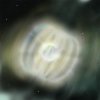
Explosion reveals tiny magnetic island
XMM-Newton has provided new insight into puzzling celestial objects known as magnetars. Astronomers have traced powerful explosions to a region just beneath a magnetars surface.
Further details on the ESA Space Science News Pages
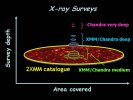
XMM-Newton releases the largest catalogue of X-ray sources
The largest catalogue of X-ray sources ever has now been released. The catalogue, '2XMM', has been compiled from observations carried out with ESA's XMM-Newton space observatory over six years of operation.
Further details on the ESA Space Science News Pages

XMM-Newton 7th Announcement of Opportunity (AO-7)
The XMM-Newton Seventh Announcement of Opportunity is now open and observing proposals may be submitted.
Further details here on our XMM-Newton SOC website
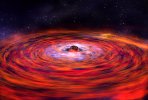
XMM-Newton & Suzaku Pioneer Method for Probing Exotic Matter
Astronomers using XMM-Newton and Suzaku have seen Einstein's predicted distortion of space-time and pioneered a ground-breaking technique for determining the properties of neutron stars.
Read further details on the ESA Space Science News Pages
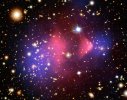
The Biggest Collisions in the Universe
XMM-Newton catches a pair of galaxy clusters merging into a giant cluster, a discovery which adds to existing evidence that galaxy clusters can collide faster than previously thought.
Read further details on the ESA News Pages

SAS 7.1.0 now available
The XMM-Newton SAS Team is pleased to announce the release of SAS 7.1.0.
Further details here on our XMM-Newton SOC Website

A&A XMM-Newton Special Feature
Astronomy & Astrophysics is publishing a special feature dedicated to the XMM-Newton extended survey of the Taurus molecular cloud. One of the main results is the identification of unusual physical processes not known before in forming stars. These unprecedented observations suggest that the gas streams falling down onto the forming star and the jets being ejected from it both play major roles in the production of X-rays.
Read further details on the A&A Website
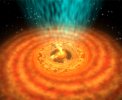
X-rays from gas streams around young stars revealed
XMM-Newton has surveyed nearly two hundred stars under formation to reveal, contrary to expectations, how streams of matter fall onto the young stars' magnetic atmospheres and radiate X-rays.
Read further details on the ESA News Pages
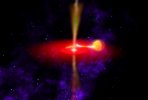
New technique for 'weighing' black holes
XMM-Newton has helped to find evidence for the existence of controversial Intermediate Mass Black Holes.
Read further details on the ESA News Pages

X-rays provide new way to investigate exploding stars
XMM-Newton has revealed a new class of exploding stars - where the X-ray emission 'lives fast and dies young'.
Read further details on the ESA Space Science News Pages
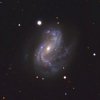
XMM-Newton pinpoints intergalactic polluters
Warm gas escaping from the clutches of enormous black holes could be the key to a form of intergalactic 'pollution' that made life possible, according to new results from XMM-Newton.
Read further details on the ESA News Pages
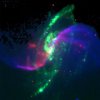
45-year old mystery spiral arms explained?
Astronomers may have cracked a 45-year old mystery surrounding two ghostly spiral arms in the galaxy M106 (NGC 4258).
Read further details on the ESA News Pages
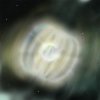
XMM-Newton catches Magnetar in Giant Hiccup
Astrophysicists have managed to catch a recently discovered magnetar in a sort of giant cosmic hiccup that still has them puzzled.
Read further details on the ESA News Pages
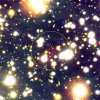
XMM-Newton solves Decade Long Mystery
The brightest member of the so-called 'Magnificent Seven' has been found to pulsate with a period of seven seconds. This discovery casts some doubt on the recent interpretation that this object is a highly exotic celestial object known as a quark star.
Read further details on the ESA News Pages

"XMM-Newton: The Next Decade", now open for registration
The workshop will summarise our current knowledge of X-ray astrophysics, discuss some of the major achievements of the last years and identify the fundamental questions still to be addressed. With this starting point, the main focus of the workshop will be to identify the scientific topics with the highest scientific importance and impact and the observing programs of maximum long-term value to the entire astronomical community. These programs may require large amounts of observing time on one or more targets or sky areas, collaborations of many astronomers from several institutions, innovative ideas or applications, or new instrument modes.
Further details here on our XMM-Newton SOC website
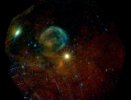
Anniversary view of nearest detected supernova
Twenty years after the first detection of SN 1987A, the nearest supernova ever detected so far, XMM-Newton provided a fresh-new view of this object. XMM-Newton confirms taht the source keeps brightening.
Read further details on the ESA News Pages
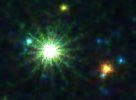
XMM-Newton reveals a magnetic surprise
XMM-Newton has revealed evidence for a magnetic field in space where astronomers never expected to find one. The magnetic field surrounds a young star called AB Aurigae and provides a possible solution to a twenty-year-old puzzle.
Read further details on the ESA News Pages
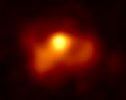
First X-ray detection of a colliding-wind binary beyond the Milky Way
Imagine two stars with winds so powerful that they eject an Earth's worth of material roughly once every month and imagine those two winds colliding head-on. Astronomers have conclusively identified the X-rays from about two-dozen of these systems in our Milky Way, but they have never seen one outside our galaxy. Until now.
Read further details on the ESA News Pages
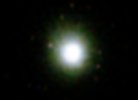
Universe contains more calcium than expected
The universe contains one and a half times more calcium than previously assumed. This conclusion has been drawn by astronomers using XMM-Newton observations.
Read further details on the ESA News Pages
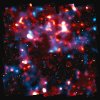
First 3D map of the Universe's dark matter scaffolding
An international team of scientists has assembled a three-dimensional map that offers a first look at the web-like large-scale distribution of dark matter in the Universe.
Read further details on the ESA News Pages
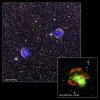
X-ray evidence supports possible new class of supernova
Evidence for a significant new class of supernova has been found with the European Space Agency's XMM-Newton and NASA's Chandra X-ray Observatory. These results strengthen the case for a population of stars that evolve rapidly and are destroyed by thermonuclear explosions.
Read further details on the ESA News Pages
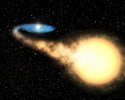
Black hole found inside globular star cluster
Astronomers have found a black hole where few thought they could ever exist, inside a globular star cluster. The finding has broad implications for the dynamics of stars clusters and also for the existence of a still-speculative new class of black holes called 'intermediate-mass' black holes.
Read further details on the ESA News Pages
- Removed a total of (1) style text-align:center;








































 Sign in
Sign in
 Science & Technology
Science & Technology